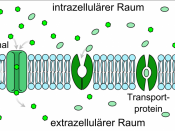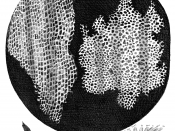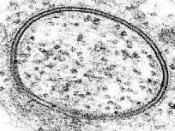Cell Membrane
In 1665, Robert Hooke, an English scientist observed cork under a microscope and noted that it was composed of small units. He called these units cells. Later it was observed that most living things are composed of cells. This led to cell theory. Cell theory is that living things are composed of cells.
A theory is a hypothesis that scientific investigations have shown to be true most of the time. A law is a hypothesis that scientific investigations have shown to be true all of the time. Cell theory is not cell law. This is because life forms called viruses, viriods and priods are not composed of cells. Other than these limited exceptions, all life is composed of cells. The cell is the basic unit of life.
Many organisms such as bacteria, amoeba, some algae, and yeast are composed of only a single cell. The single celled organisms are described as being "unicellular."
However, most organisms are composed of many cells and are described as being "multicellular." All cells live in a fluid environment. The human body, for example, is about 70% water. To live, cells must be able to obtain material from and release substances into a liquid environment. It is the cell membrane which allows materials to come into a cell, as well as allowing substances to be released from a cell. An important property of the cell membrane is that it is semipermeable. Semipermeable means that the membrane only allows certain things to pass into or out of the cell. Generally, only those materials that need to enter the cell are allowed to enter. Generally, only those materials which need to be released from the cell are allowed to leave the cell.
Cell membranes are composed of two layers of molecules called phospholipid. This phospholipid...



Well done
good job explaining everything that people might have not known (exocytosis)
1 out of 1 people found this comment useful.